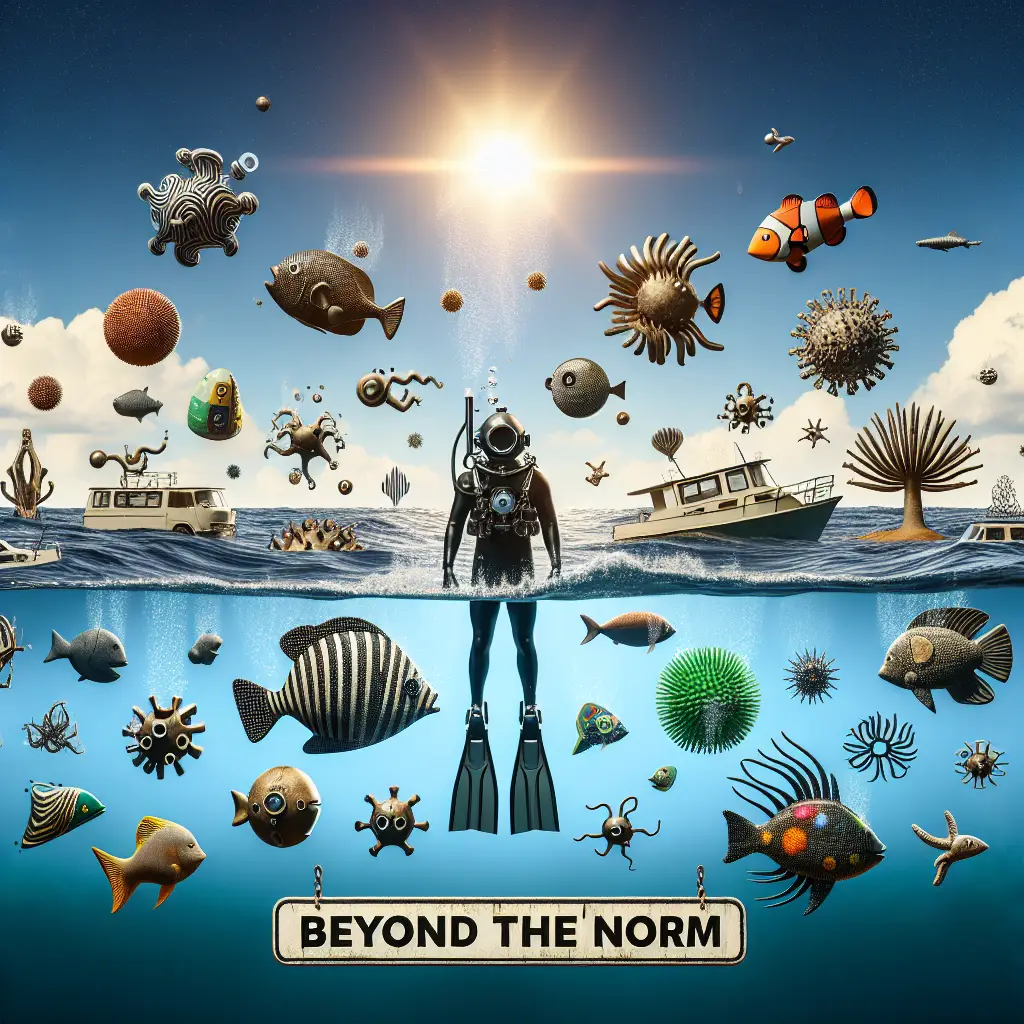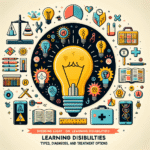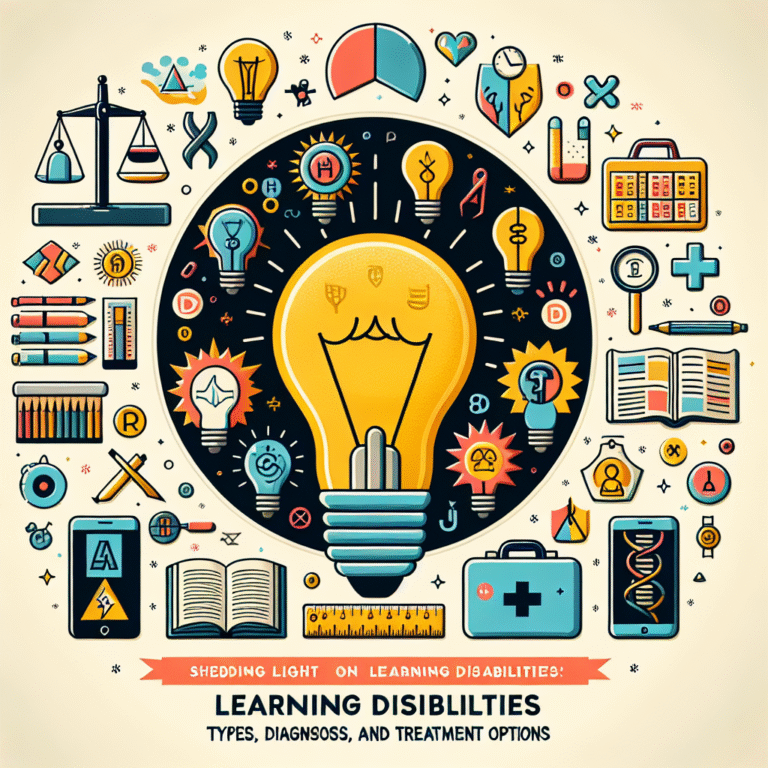
Beyond the Norm: A Deep Dive into Personality Disorders and Their Characteristics
Introduction
In today’s fast-paced world, embracing our differences is more important than ever. While some personalities shine brightly in social situations, others may struggle under the weight of misunderstandings and mislabeling. Personality disorders, often going overlooked or misrepresented, shape the lives of millions, yet they remain enshrouded in stigma. "Beyond the Norm: A Deep Dive into Personality Disorders and Their Characteristics" seeks to unravel these complexities, providing not only clarity but a deeper understanding of the traits, challenges, and capabilities associated with personality disorders.
Why Understanding Personality Disorders Matters
As we journey through this exploration, we’ll uncover the various personality disorders—what they entail and how they impact individuals and their relationships. Gaining insights into these issues can foster empathy and provide individuals with the tools needed for effective communication and intervention. Whether you are a mental health professional, a caregiver, or someone seeking to understand themselves or a loved one, this guide is designed for you.
Understanding Personality Disorders
Defining Personality Disorders
Personality disorders constitute a group of mental health conditions characterized by persistent patterns of behavior, cognition, and inner experience that deviate from cultural norms. According to the Diagnostic and Statistical Manual of Mental Disorders (DSM-5), personality disorders are broadly categorized into three clusters:
- Cluster A (Odd or Eccentric Behavior): Includes Paranoid, Schizoid, and Schizotypal Personality Disorders.
- Cluster B (Dramatic, Emotional, or Erratic Behavior): Includes Antisocial, Borderline, Histrionic, and Narcissistic Personality Disorders.
- Cluster C (Anxious or Fearful Behavior): Includes Avoidant, Dependent, and Obsessive-Compulsive Personality Disorders.
Understanding these categories sets the stage for a comprehensive view of personality disorders and their characteristics.
Key Characteristics of Personality Disorders
Each personality disorder has its own unique set of traits and behaviors. Below is an overview of some common personality disorders along with their defining characteristics.
| Disorder | Key Characteristics |
|---|---|
| Paranoid Personality Disorder | Distrust and suspiciousness of others |
| Narcissistic Personality Disorder | Grandiosity, a need for admiration, and a lack of empathy |
| Borderline Personality Disorder | Instability in moods, behavior, and relationships |
| Avoidant Personality Disorder | Social inhibition, feelings of inadequacy, and hypersensitivity |
| Obsessive-Compulsive Personality Disorder | Preoccupation with orderliness, perfectionism, and control |
These traits can lead to significant difficulties in personal relationships, career success, and overall functioning, making it essential to understand their implications.
Real-World Case Studies
Case Study 1: The Challenges of Borderline Personality Disorder
Subject: Sarah, 28
Sarah faced intense emotional turmoil, often feeling abandoned in relationships. With a history of unstable romantic relationships, her reactions were frequently viewed as overblown by her friends and family. After being diagnosed with Borderline Personality Disorder, Sarah engaged in therapy which opened avenues for communication.
Analysis: Sarah’s experience illustrates the impact of Borderline Personality Disorder in interpersonal relationships. Her journey toward emotional regulation and open dialogue demonstrates the value of understanding personality disorders.
Case Study 2: Navigating Autism and Schizotypal Traits
Subject: Mark, 34
Mark displayed traits commonly associated with autism but also exhibited peculiar behaviors indicative of Schizotypal Personality Disorder. While his odd notions about conspiracy theories alienated some, he found camaraderie within online communities.
Analysis: Mark’s case highlights the intersectionality of different disorders, showcasing how unique traits can shape an individual’s experience and coping strategies. This understanding can encourage tailored approaches in therapy and support networks.
The Societal Impact of Personality Disorders
Stigma and Misunderstanding
One of the greatest hurdles faced by individuals with personality disorders is societal stigma. Misrepresentation in media and popular culture often leads to misunderstandings and unfair judgments. The lack of visibility and education surrounding these disorders exacerbates the situation, leaving those affected feeling isolated and devalued.
Toward Compassionate Awareness
Education is vital. By informing ourselves about personality disorders, we cultivate a more compassionate world that embraces diversity rather than shuns those who are “beyond the norm.” Community support, mental health resources, and open dialogues are crucial in fostering a healthy environment for everyone.
Coping Strategies and Support Systems
Therapy Options
Therapy plays a fundamental role in the treatment of personality disorders. Common therapeutic approaches include:
- Dialectical Behavior Therapy (DBT): Particularly effective for Borderline Personality Disorder, it combines cognitive-behavioral techniques with mindfulness.
- Cognitive Behavioral Therapy (CBT): Helps individuals identify and change unhealthy thought patterns.
- Schema Therapy: Focuses on identifying core schemas that influence behavior.
Building a Support System
Building a robust support system is crucial for individuals diagnosed with personality disorders. This might include:
- Close family and friends who provide strong emotional support.
- Support groups, either in-person or online, where shared experiences cultivate understanding and growth.
- Mental health professionals who offer guidance and coping strategies.
Conclusion: Moving Forward with Empathy
"Beyond the Norm: A Deep Dive into Personality Disorders and Their Characteristics" has shed light on an often-misunderstood realm of mental health. As we reflect on what we’ve learned, it’s clear that increasing awareness and understanding can help individuals feel seen and valued, rather than marginalized. Empathy should drive our interactions, and valuing diversity in personality is essential.
Remember, understanding personality disorders is about more than just facts and figures; it’s about recognizing the human experience behind the diagnosis. Each individual carries a unique story. Let’s strive to be a part of the solution, advocating for change and inclusivity.
FAQs
1. What are the most common personality disorders?
The most common personality disorders include Borderline, Narcissistic, Antisocial, and Avoidant Personality Disorders. Each has distinct traits but can significantly impact interpersonal relationships.
2. Is it possible to live a normal life with a personality disorder?
Yes, many individuals successfully manage their personality disorders with therapy, support systems, and coping strategies. With appropriate treatment, they can lead fulfilling lives.
3. How can I support a loved one with a personality disorder?
Educate yourself about their specific disorder, practice empathy, and encourage them to seek professional help. Open communication is key.
4. Are personality disorders hereditary?
There is evidence suggesting that personality disorders may have a genetic component, but environment and personal experiences also play critical roles in development.
5. What’s the difference between a personality disorder and a mental health disorder?
While all personality disorders fall under the umbrella of mental health disorders, they are characterized specifically by deeply ingrained patterns of behavior and cognition that can disrupt one’s life and alter their worldview, as opposed to more acute incidents seen in other mental health disorders.
Final Thoughts
As we continue our journey beyond the norm, remember that understanding, compassion, and education are the keys to breaking the stigma surrounding personality disorders. Let’s foster an inclusive environment that acknowledges the complexities of each individual’s experience. Together, we can aspire toward a better tomorrow for everyone, embracing our differences and celebrating our unique personalities.










